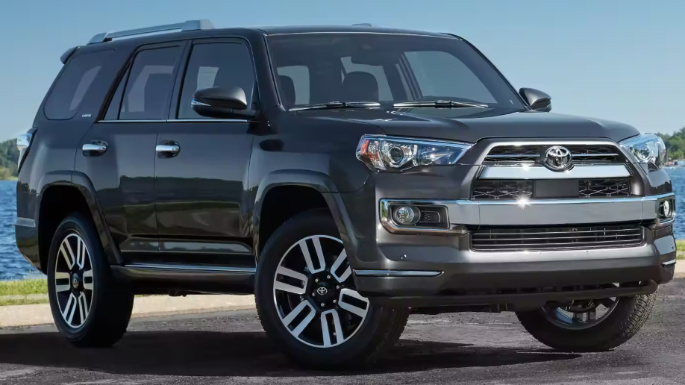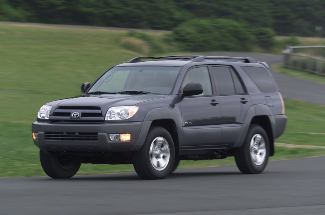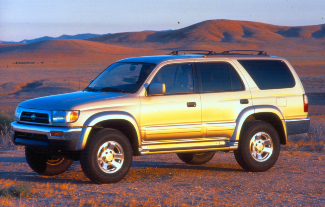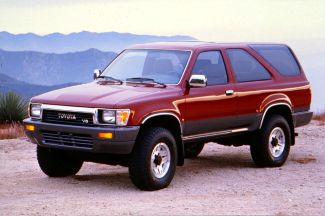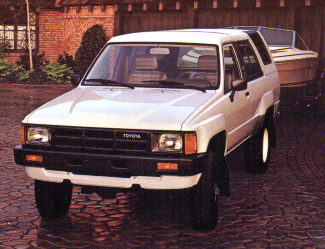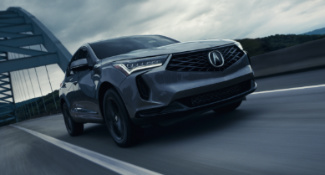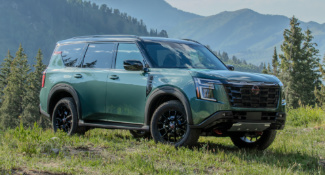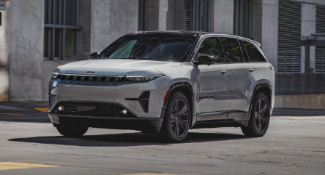Top Questions About the Toyota 4Runner:
1. Is Toyota discontinuing the 4Runner?
Toyota has not announced any plans to discontinue the 4Runner. The 4Runner is one of Toyota's most iconic and enduring models and particularly popular among off-road enthusiasts. It continues to be a strong seller, especially in markets where rugged, body-on-frame SUVs are preferred for their durability and off-road capabilities. While the SUV market is shifting towards crossovers, the 4Runner’s niche appeal and loyal customer base ensure it remains a staple in Toyota's lineup.
2. Is the Toyota 4Runner a good car?
The Toyota 4Runner is considered a very good car, particularly for those who need a capable off-road vehicle. It is one of the few remaining SUVs built on a truck-based body-on-frame platform, which gives it excellent durability and off-road performance. The 4Runner is also known for its reliability and long lifespan, often lasting well over 200,000 miles with proper maintenance. However, it may not be the best choice for those looking for a smooth, car-like ride or the latest in infotainment technology, because its design prioritizes ruggedness over refinement.
3. What is the most common problem with a Toyota 4Runner?
One of the most common problems reported with the Toyota 4Runner is excessive oil consumption in certain model years, particularly older models. Some owners have also reported issues with the automatic transmission, especially in high-mileage vehicles. Additionally, the 4Runner’s fuel economy is often cited as a downside, as its heavy, rugged design and powerful V6 engine are not particularly fuel-efficient.
4. Are 4Runners losing value?
Toyota 4Runners tend to hold their value exceptionally well. This is largely due to their reputation for reliability, durability, and strong demand in both new and used markets. The 4Runner’s robust construction and off-road capability make it a favorite among buyers who need a dependable SUV, which keeps resale values high. Even older models with high mileage can command strong resale prices, making the 4Runner a good investment in terms of long-term value retention.
The Toyota 4Runner began life as a smallish, two-door SUV but eventually morphed into the mid-size, rugged SUV it is today. When it started production in 1983, the earliest versions were essentially Toyota 4x4 pickup trucks with a roll bar and hard shell over the bed and rear seats installed inside.
Throughout its lifespan, the 4Runner has earned a reputation as one of the more capable and rugged SUVs on the market and enjoys a fiercely loyal following. The 4Runner continues to retain its rugged character even as many competing models shift to unibody-based crossover SUVs.
2025 - Present Toyota 4Runner (N380 6th Generation)
The sixth-generation Toyota 4Runner was fresh for the 2025 model year, following the recently redesigned Toyota Landcruiser, Tundra, Sequoia, Tacoma, and Lexus GX after a run of over a decade without any major redesigns. Toyota retained the 4Runner’s focus on durability and off-road capability by mimicking the Tacoma’s rugged exterior styling touches and adding modern enhancements to the previously aging truck.

In addition to the significant interior and exterior styling updates, the biggest change to the 4Runner lineup is under the hood. For the first time ever, the 4Runner will not be available with a V6 or a V8 engine option. Rather either a 278-horsepower turbocharged four-cylinder engine or a hybridized version of the same engine that produces 317 horsepower and 465 lb-ft of torque. Both options are accompanied by a 10-speed automatic transmission.

Both part-time and full-time four-wheel drive options are on the table with the added benefit of a two-speed transfer case. Each model has a minimum of 9.2 inches of ground clearance with more being awarded on the most off-road-focused configurations. Stabilizer bar disconnect, 33-inch all-terrain tires, a multi-terrain monitor, and an electronic locking rear differential are all available for those who crave venturing off the pavement.
The 4Runner's nine trim levels comprise SR5, TRD Sport, TRD Sport Premium, TRD Off-Road, TRD Off-Road Premium, Limited, Platinum TRD Pro, and Trailhunter. Platinum and Trailhunter were all-new for 2025.
The redesigned 4Runner’s off-road capability and rugged exterior styling only tell half the story, though. Each buyer has access to an eight-inch or 14-inch infotainment touchscreen that utilizes Toyota’s latest infotainment system. Wireless Apple CarPlay, wireless Android Auto, a seven- or 12.3-inch digital gauge cluster, push-button start, and an available digital key complement the array of new technology offerings.
Additionally, safety features such as pedestrian detection, road sign detection, lane-departure warning, lane-tracing assist, automatic high beam headlights, adaptive cruise control, and proactive driving assist all come standard across the 4Runner lineup.
2010 - 2024 Toyota 4Runner (N280 5th Generation)
In 2009, the fifth-generation 4Runner debuted for the 2010 model year. Its exterior design moved away from the more rounded lines of the previous generation and instead took a cue from the 4Runner's truck-based heritage. This generation initially offered three trim levels, two of which carried over from the previous generation. The new addition was the four-wheel drive Trail Edition, which featured the carmaker's Kinetic Dynamic Suspension System and a locking rear differential.
Engines offered in this generation included the 2.7-liter 2TR-FE inline-four and the 4.0-liter 1GR-FE V6. A four-speed automatic transmission was only available with the inline-four in 2010, with the other models featuring a five-speed automatic. Safety ratings for this generation were largely good with only one marginal rating in the small overlap frontal offset category.
For the 2011 model year, Toyota no longer offered the four-cylinder engine, so the V6 became the only available powertrain. In 2012, the 4Runner received new optional upgrades to the sound system and automatic running boards were available on certain trim levels.
For the 2014 model year, the 4Runner received a complete set of upgrades. Its front and rear fascia were totally revised for an all-new look, including projector headlights and LED tail lights. It also included a revamped interior with a completely redesigned dashboard and Optitron instrument cluster. The drivetrain, however, remained unchanged and featured the same 4.0 liter V6 as previous incarnations.
The 2015 model year saw the release of the TRD Pro trim level. This was designed for even better off-road capabilities, and included Bilstein shocks with TRD off-road-tuned front springs and a skid plate. The new Entune infotainment system was also inctroduced in 2015, which included a 6.1-inch touchscreen display and a backup camera.
The biggest upgrade to the fifth-generation 4Runner came during the 2020 model year. All trim levels for this year included the Toyota Safety Sense-P system standard – a complete driver awareness system comprising a pre-collision sensor, pedestrian detector, lane tracing assistance, and more. They also received an upgrade to the Entune infotainment system that gave it a higher-resolution display and wireless capabilities.
The 2021 model year saw the introduction of a special edition 4Runner Trail trim level, of which 4,000 models would be built. These 4Runners received special badging, color 17-inch wheels, black upholstery with contrasting tan stitching, all-weather floor mats, and a Toyota branded cooler. Upgrades made across the trim range included standard LED headlights, while TRD Pro models received a new available paint color, Lunar Rock, new wheels, and a retuned suspension for a more comfortable ride on bumpy trails.
For 2022, a new TRD Sport trim was added to the lineup with a hood scoop, 20-inch wheels, and special badging. The model also includes adaptive suspension dampers borrowed from the Limited trim. LED high beams were also made standard across all trim levels.
The 2023 model year saw the addition of a 40th-anniversary edition and the 4040 40th Anniversary 4runners built included white, black, or red paint with retro graphics. Additionally, the trim included 17-inch bronze painted wheels, leatherette upholstery with contrasting bronze stitching, and plenty of 40th Anniversary badging. Across all models, standard safety features were upgraded to include rear cross-traffic alert and blind spot monitoring.
No changes were made to the 2024 model as it was the final fifth-generation 4Runner. A new 4Runner with a more modern powertrain to better compete with off-road-oriented offerings like the Ford Bronco and Jeep Wrangler would be introduced the following year.
2003 - 2009 Toyota 4Runner (N210 4th Generation)
The fourth-generation 4Runner was markedly different car from the early models. It featured more changes to the body and chassis, which gave it the option of third-row seating and made it look like a semi-luxury SUV in the midsize class, much like the Land Cruiser Prado. Though the 4Runner still had plenty of off-road credibility, it was also marketed more to full-time on-road consumers.
Engines included the 4.0-liter V6 and a new 4.7-liter V8 which, by the 2005 model year, had an output of 268 horsepower. It featured relatively high fuel economy compared to its power output at 15 mpg city and 19 highway. The manual transmission was dropped in favor of four-speed and five-speed automatics.
This generation came in three trim levels, including the Toyota 4Runner SR5, Sport Edition, and Toyota 4Runner Limited. Double wishbone suspension was added at the front, and the rear was a solid rear axle. As a nod to its past, this generation continued to use the body-on-frame design, which somewhat blunted interior room as well as on-road handling. This was in contrast to the Highlander, Toyota's other midsize entry, which was explicitly designed only for on-road use.
1996 - 2002 Toyota 4Runner (N180 3rd Generation)
The third-generation 4Runner saw a shift into the midsize SUV class and deviated from the standard pickup truck body style and appearance. A major redesign introduced a new body shell on a new chassis for a five-door wagon, and the 4Runner no longer looked exactly like the Toyota pickup.
It was geared towards on-road consumers, became more luxurious, and featured additional cargo space. Its available engines included the 2.7-liter inline-four and the 3.4-liter V6. Four-speed automatic and five-speed manual transmissions remained the standard options.
Other significant changes from the second generation included a longer wheelbase, more cargo and passenger space, dual airbags, a lifting tailgate, all-around coil springs, ABS, and rack and pinion steering. The 1999 models further enhanced the cosmetic appearance of the 4Runner with upgraded safety bumpers, improved interior ergonomics, and a new instrument cluster. The 2001 model year also saw a newly designed grille and five-spoke wheels.
1990 - 1995 Toyota 4Runner (N120/N130 2nd Generation)
Although it was still a compact SUV, the 4Runner began to slowly distinguish itself from the Toyota pickup of the same timeframe. The second-generation 4Runner featured an integrated body-on-frame design, though it was still identical to the pickup from the B-pillars forward. The entire metal roof was now fixed, unlike the previous generation which had a removable rear shell.
The majority of 4Runners in this generation were standard four-door SUVs, although wagon versions were available in this generation's early years. Engines in this generation included the sturdy 2.4-liter 22R-E inline-four and a 3.0-liter 3VZ-E V6. V6 models featured a gear-driven transfer case and were eventually upgraded to a chain-driven case.
Four-cylinder models still used the gear-driven case. This 4Runner continued to have a pickup-style tailgate that required the window to be retracted first before opening, unlike some of its rival SUVs at the time that had upward-opening tailgates with closed glass. The rear suspension system was upgraded to coil springs.
1984 - 1989 Toyota 4Runner (N60 1st Generation)
The first-generation 4Runner was scarcely more than a filled-in Toyota 4x4 pickup. It only had two doors, and its front fascia looked identical to the Toyota trucks of the era. While the roof above the driver and passenger was fixed metal like the trucks, the cab covering the rear seats and the cargo area was removable fiberglass, and this was the only generation of 4Runner to offer this setup.
Due to the back end not being reinforced to support the top and seats, the earliest generation was known to sag in the rear. The first 1984 engine was a 2.4-liter 22R rear-wheel drive four-cylinder engine with a carburetor and an available four-wheel drive system.
The 1985 model received an upgraded 22R-E engine with fuel injection, while the first carbureted engine remained available until 1988. In 1986, the 4Runner received a significant redesign that changed the front suspension from a solid front axle to independent suspension. This allowed the 4Runner to perform more comfortably on-road and gave the engine compartment more space to fit V6 engine, which was introduced in 1987.
The transmissions offered in the first generation included a four-speed automatic and a five-speed manual.

